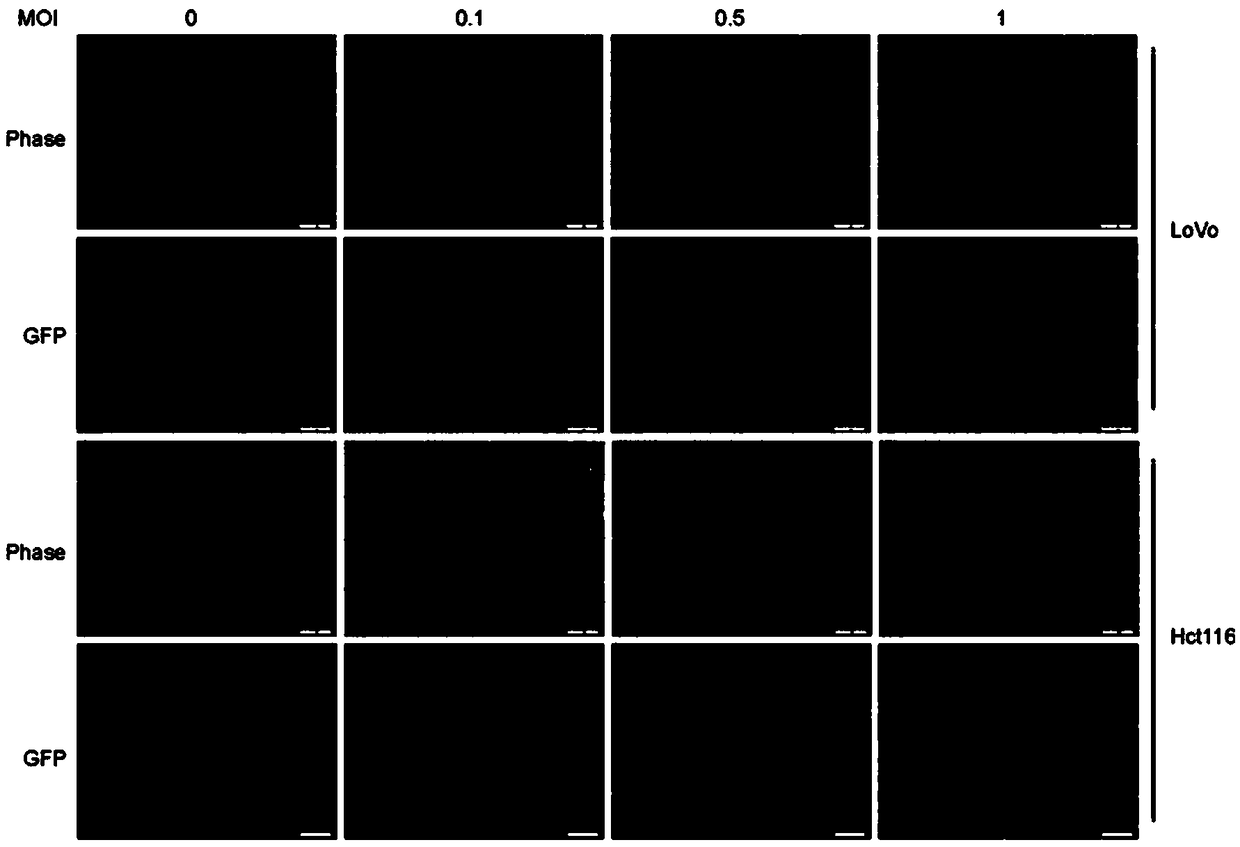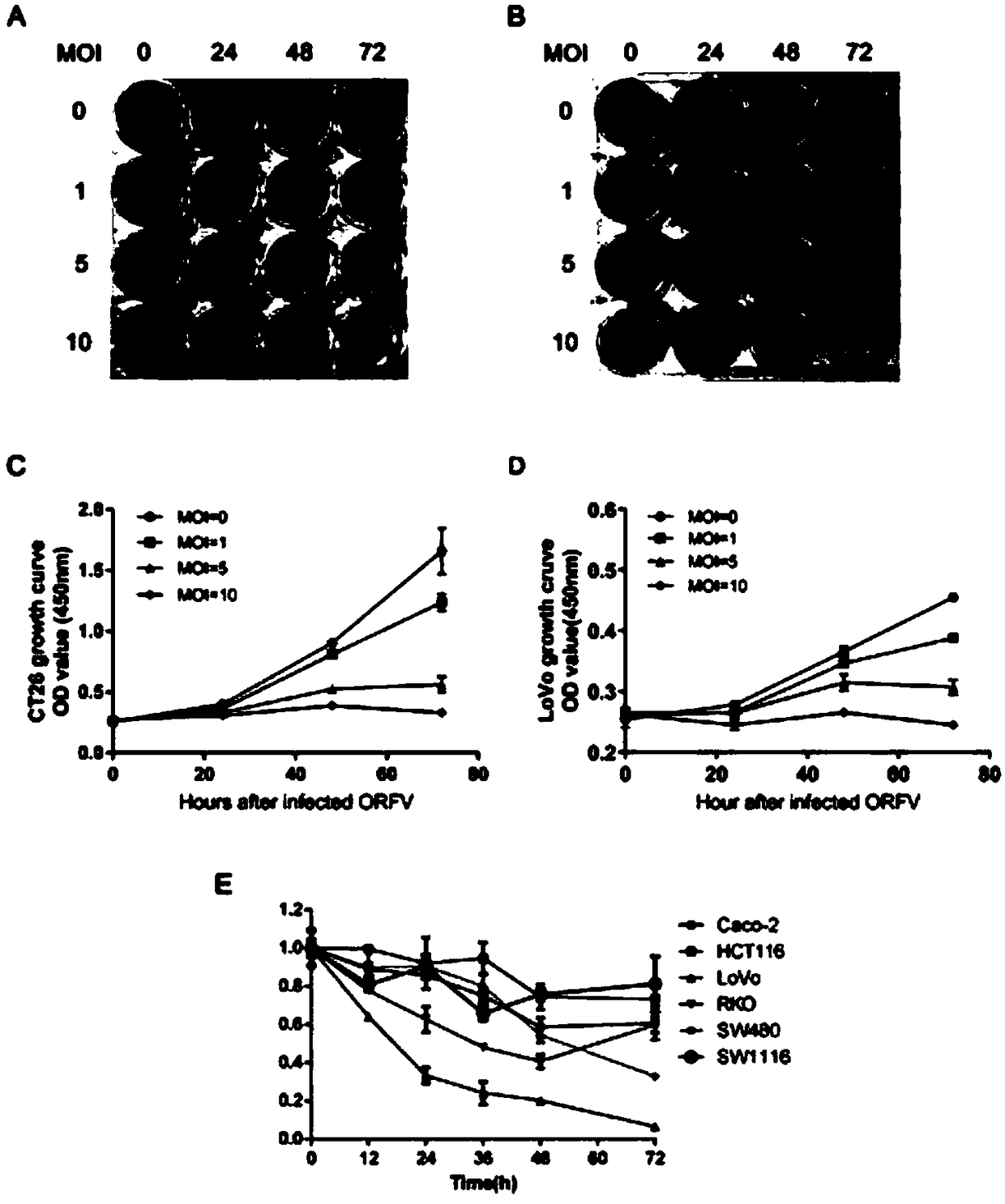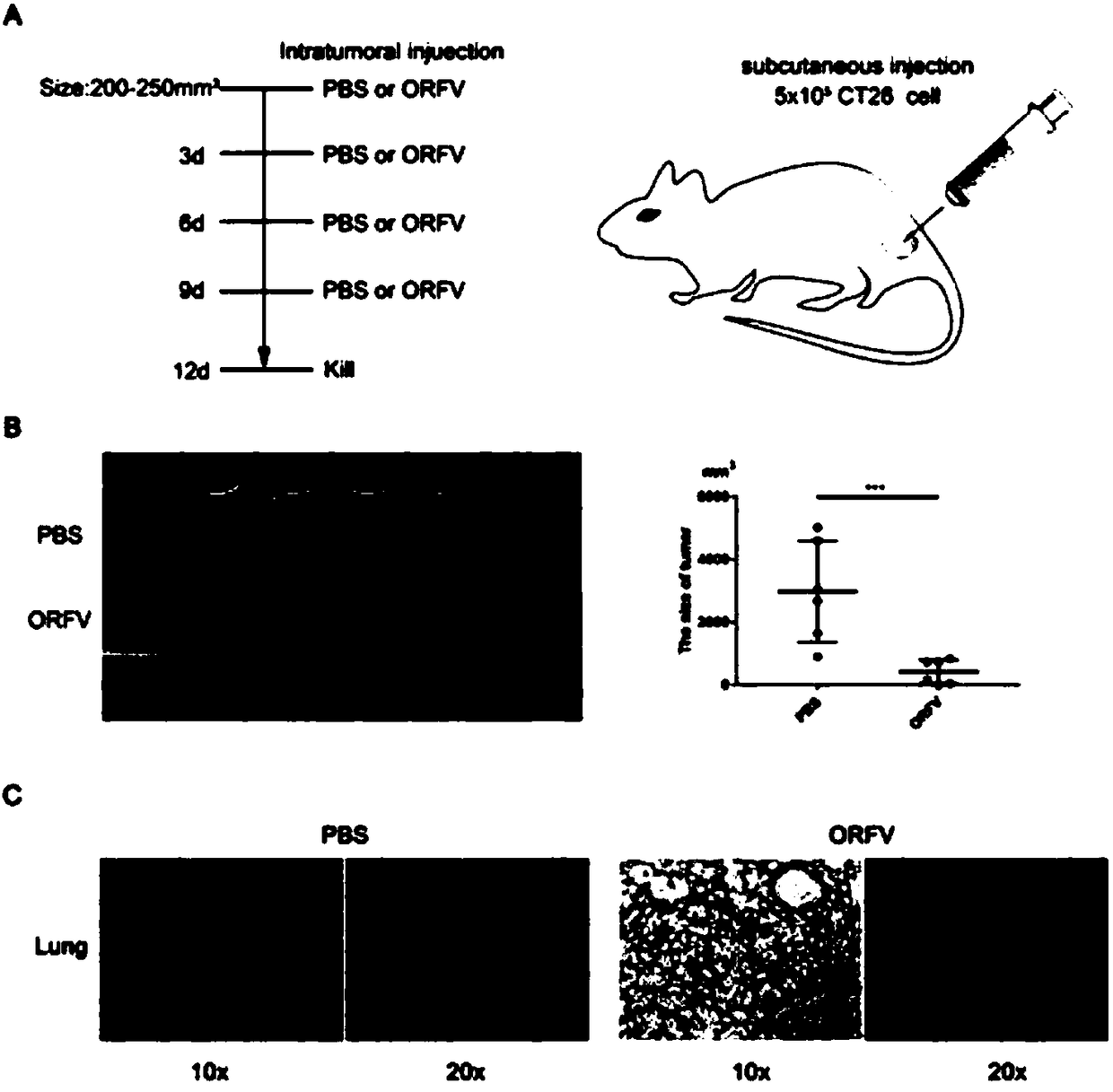Application of ORFV in preparation of anti-colorectal cancer cell drugs
A technology for sheep infectious pustules and colorectal cancer, applied in the biological field, can solve the problems of targeted antibody drug resistance, high price, and high cost, and achieve good curative effect, low cost, and low toxicity
- Summary
- Abstract
- Description
- Claims
- Application Information
AI Technical Summary
Problems solved by technology
Method used
Image
Examples
Embodiment 1
[0035] ORFV virus effectively inhibits colorectal cancer tumor growth
[0036] It can replicate and proliferate in 6 kinds of colorectal cancer cell lines, and at the same time reduce the survival rate of tumor cells, and inhibit the growth and metastasis of 6 kinds of colorectal cancer cell lines, 6 kinds of human colon cancer cells Caco-2, HCT116, LoVo , RKO, SW480 and SW1116 were purchased from Shanghai Cell Bank (Shanghai, China). Mouse colon cancer cell CT26 is derived from BALB / c mice and kept in the laboratory. All colon cancer cells were cultured in DMEM medium containing 10% bovine serum.
[0037] The CCK-8 method was used to detect the tumor cells inoculated in a 96-well plate at a density of 103 per well, and the tumor cells were stimulated with ORFV with different virus titers (MOI=0, 1, 5, 10). Cells were harvested at 0, 24, 48 and 72 hours. Remove cell supernatant at 37 °C, 5% CO 2 Incubate with CCK-8 solution (10% CCK-8 diluted DMEM medium containing 10% bov...
Embodiment 2
[0041] ORFV virus causes tumor cell death in colorectal cancer
[0042] The apoptosis of tumor cells induced by ORFV virus was detected by flow cytometry. Tumor cells were inoculated in a 96-well plate at a density of 106 per well, and ORFV or PBS with virus titer (MOI=10) was added to culture for 24 hours, and the tumor cells were collected at 800RCF for 5 minutes. Adherent cells were digested with 0.25% trypsin-EDTA (Solabio, Beijing, China), washed twice with PBS, and collected in 1.5ml clean EP tubes. Cell apoptosis was detected by flow cytometry (BD LSR Fortessa).
Embodiment 3
[0044] ORFV inhibits the growth of subcutaneous tumor tissue in mice
[0045] CT26 (50 μL 0.9% NaCl / 5 ⅹ 105 ) cells were inoculated subcutaneously in Balb / c mice to establish a tumor model. When the tumor reached 200-250 mm3, the mice were randomly divided into two groups. One group was treated with intratumoral injection of 50 μl PBS, and the other group was treated with intratumoral injection of ORFV (108TCID50, 50 μL). Inject every 3 days. After 12 days, the mice were sacrificed, and the mouse tumors and spleens were collected. In the metastasis model, Balb / c mice were subcutaneously inoculated with CT26 (50 μL 0.9% NaCl / 5ⅹ10 5 )cell. After 24 hours, the mice were randomly divided into two groups. One group of mice was injected with ORFV (108 PFU) into the tail vein on day 1, 3 and 8 respectively, and the other group was injected with PBS intravenously. The mice were sacrificed after 11 days. Collect mouse spleen and serum.
[0046] The collected CT26 tumor and spleen ...
PUM
 Login to View More
Login to View More Abstract
Description
Claims
Application Information
 Login to View More
Login to View More - R&D
- Intellectual Property
- Life Sciences
- Materials
- Tech Scout
- Unparalleled Data Quality
- Higher Quality Content
- 60% Fewer Hallucinations
Browse by: Latest US Patents, China's latest patents, Technical Efficacy Thesaurus, Application Domain, Technology Topic, Popular Technical Reports.
© 2025 PatSnap. All rights reserved.Legal|Privacy policy|Modern Slavery Act Transparency Statement|Sitemap|About US| Contact US: help@patsnap.com



